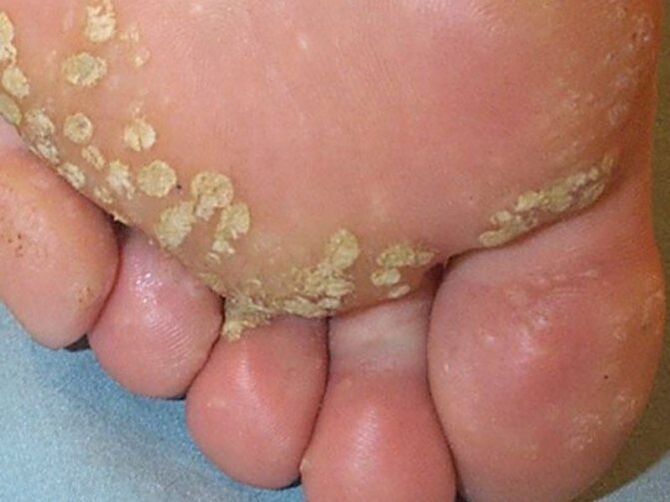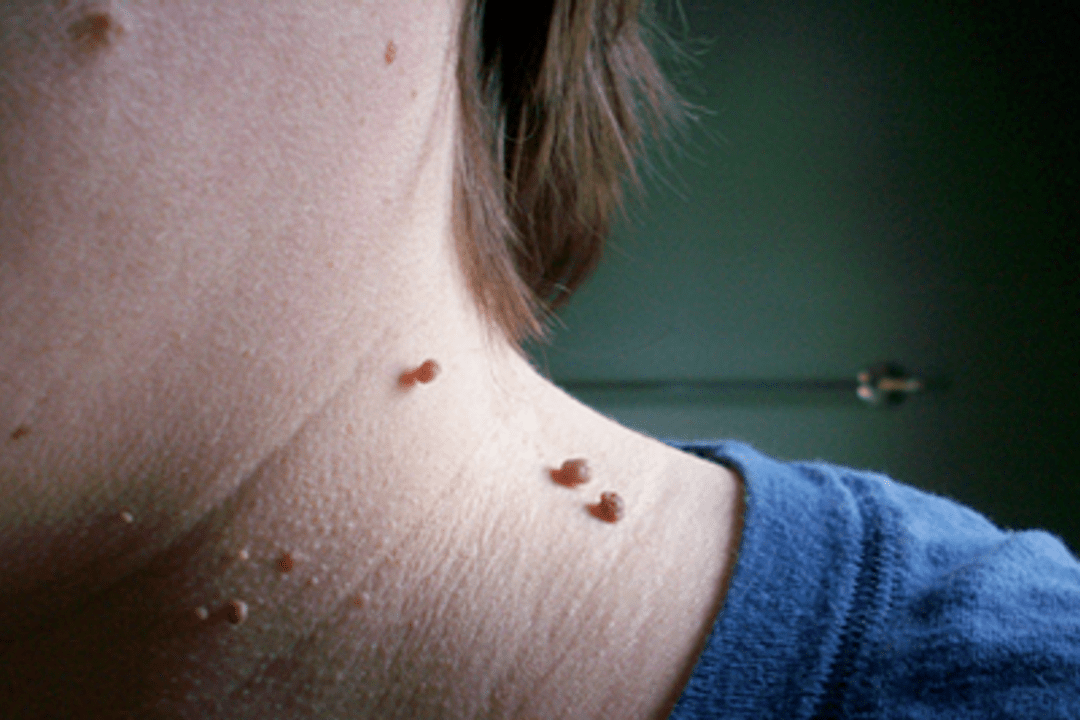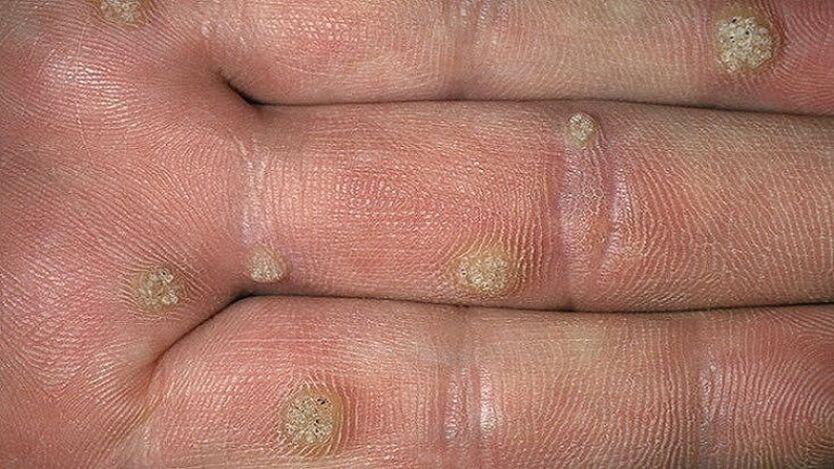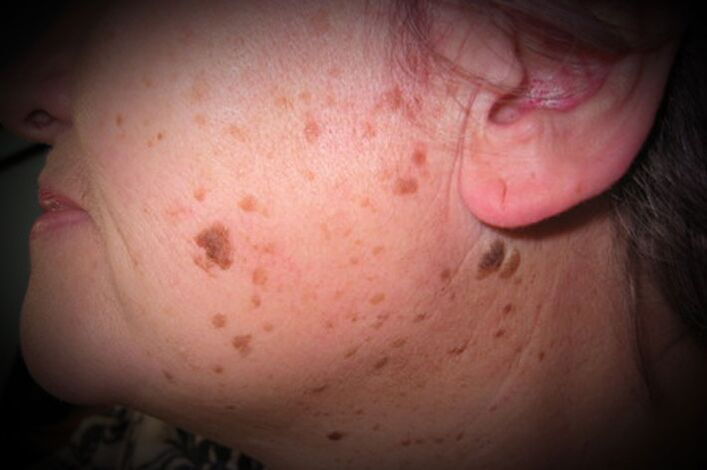Warts are benign growths on human skin. It is usually a few millimeters in size, but there are larger types of warts as well. Such neoplasms can appear in different parts of the human body.
As you know, not all warts are safe. There are some types of skin lesions that require immediate removal. This is necessary to prevent further complications.
Classification of warts
In medicine there are several types of benign formations that can appear on human skin. They differ from each other in appearance, have different developmental specifics, as well as location.
There are the following types of warts:
- Ordinary (most common);
- Plantar (fixed on the feet);
- Drip (warts);
- filiform (acrochords);
- Apartment.
Common warts
Such neoplasms have a diameter that usually does not exceed 1 cm. They are fairly dense tumors with uneven surfaces and clear borders. Skin lesions belonging to this species are characterized by the following characteristics:

- Rounded shape;
- Color from yellow to dark gray;
- Warts are often found on the elbows, fingers, knees, lips and other areas of the body that are often affected.
Sometimes the formations disappear on their own, but in most cases they require long-term treatment.
Plantar warts
Such formations get their name from their layout. They stand on their feet, have a convex shape, but due to the constant pressure created by the weight of the human body, they can become flat. The formation is surrounded by a keratinized layer of skin.

Plantar growth can be uncomfortable and painful. This type of benign lesion differs from maize in that small drops of blood are excreted rather than in the casting of fluid. Plantar warts can cause problems when wearing shoes. They can appear at any age.
Genital warts
Fibroepithelial growths contain a large number of intermittent nodules that are connected to each other. Their surface may be white or red, sometimes causing bleeding and pain.
Droplet benign neoplasms usually appear on the mucous membrane, at the sites of its transition to the skin. In the future, they will grow, become big. The result is tumor-like growths.
Filiform warts
Such a formation on the skin gets its name from the shape. The fibrous warts are narrow and long. Their locations are as follows:
- Face;
- Neck;
- lips.

Outwardly, the fibrous formations resemble a broken thread. They can appear on the body of people of any age, but are often observed in the elderly. During their development, the fibrous formations change their appearance:
- At first, acrocorders look like small bumps on the skin. For this reason, they can easily be mixed with carpet.
- Subsequently, the knot increases in size, acquiring an elongated shape. In some cases the acrocords are round but still have a thin stem.
- Consistently, the formation is elastic and relatively dense. Typically, its length does not exceed 5 mm, although there are cases when the acrocord is more than 1 cm.
Some people have several growths on the body that grow together. In this way, they look like a rooster comb. Acrocords may be brown or remain fleshy. Sometimes they itch.

Flat warts
Such formations are nodules that are flat to the touch. They are yellowish-brown in color and are usually located on the eyelids and face. These nodules are common in children, but they can also appear in the elderly. These benign neoplasms do not tend to transform into malignant tumors. This type of growth is very rare.
Flat warts rise slightly to the surface of the skin. They are characterized by a smooth surface and clear borders. A distinctive feature is the absence of keratinized skin, which maintains smoothness and radiance. Such formations are localized on the face, lower leg, back of the hand.
Tip!In case of neoplasms on the body, you should definitely consult a dermatologist. Only he will be able to determine exactly what nature they have. This eliminates the development of malignant tumors on the skin.
Aged warts
There are other types of benign growths that occur on the human body that can be divided into separate categories. Their characteristics are as follows:
- Older warts (seborrheic keratosis) occur exclusively in the elderly and do not require treatment;
- They are usually located on the skin, which is often covered with clothing and is rarely seen on the hands and face;
- Such neoplasms develop from the epidermis.
The elements of seborrheic keratosis are often numerous. Clinical manifestations depend on the time and location of development. Early elements are small flat spots of pink or yellow color with clear borders as well as a wart surface.

They look like an oily crust on the skin that is easily removed. Subsequently, these crusts are compacted, striped cracks. Over time they transform into a mushroom shape, becoming black or dark brown.
Formations have a soft consistency, their boundaries may not be completely clear, even toothed. However, they are similar to melanoma. In some cases, there is a domed form of seborrheic keratosis elements.
Tip!In the presence of older warts, it is recommended to significantly increase the amount of vitamin C in the body. This helps stop the appearance of new spots. However, it should be borne in mind that excessive amounts of vitamin C can cause certain changes in stomach function, as well as promote the formation of stones in the kidneys.
The choice of treatment depends on what type of warts are being treated. Either way, this process should not be left to chance. Timely contact with a dermatologist will allow the patient to undergo the procedure of removing skin formations easily and without complications. In addition, warts can be confused with malignant diseases, the treatment of which does not really require delay.














































































